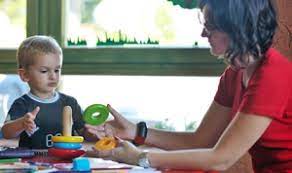How I Became a Better Occupational Therapist: 10 ways to engage with the disability community and grow as a clinician and advocate

By Alanna Raffel for TECH OWL
About eight years ago, as a recently graduated occupational therapist, I began my career working in an acute rehab hospital. The patients on my caseload had recently experienced a stroke or brain injury, and I was completely overwhelmed. I desperately wanted to help them, but felt I lacked the expertise or resources to fully support my newly disabled patients. I had many more questions than answers. How will this person who can no longer type go back to work? How can I encourage someone to work on strength and balance, while knowing that walking again may not be an option? Sometimes it felt like my questions were endless.
After leaving this job, I worked in early intervention, outpatient pediatrics, and schools. Over time, I discovered more comfortable workplaces, yet I continued to experience a persistent nagging feeling that something big was missing in my work. Eventually, I became deeply involved in disability advocacy, accessibility, and inclusion. Eight years later, this work has dramatically shifted the way I see my own access needs and my role as an occupational therapist. This knowledge would have informed my interactions with those patients as a new therapist in that rehab hospital and in every setting I worked in thereafter. I would love for everyone, but especially OTs, to become more engaged with the disability community. Here are ten ways you can get started.
- Learn about assistive technology and get involved with your state’s AT Act program. In Pennsylvania, our program is called TechOWLand I work here now!
- Familiarize yourself with the neurodiversity movement and listen to autistic adults. Follow the hashtag #ActuallyAutisticand light it up #RedInstead during the month of April. Join the Therapist Neurodiversity Collective group on Facebook. I’d also recommend listening to Jess Edelstein’s new podcast, Wheels On My Back.
- Get to know the history of the disability rights movement and the independent living movement. Crip Campmight be a good place to start, as well as this episode of 99% Invisible. Connect with your local center for independent living. Liberty Resources is the Center for Independent Living in Philadelphia.
- Watch Stella Young’s TED Talkabout “inspiration porn.”
- Follow disability advocates on social media, like Emily Ladau. Also, make sure to follow those who are multiply marginalized. Some suggestions: Imani Barbarin, Chella Man, Annie Elainey
- Support films and television shows that honor authentic disability representation, like the recent release Best Summer Ever. Avoid movies that perpetuate ableist narratives, such as “better dead than disabled.”
- Read books by disabled authors. My recent favorite was Disability Visibility, a collection of essays edited by Alice Wong. Now I’m reading Care Work: Dreaming Disability Justiceby Leah Lakshmi Piepzna-Samarasinha.
- Check if your city has a local Disability Pride organization and/or parade. In Philly, Disability Pride Philadelphiais gearing up for a series of events at the end of June.
- Caption your videos and add image descriptions and alt text to your photos online. Learn about alt text here.
- Do the hard, but important work of learning to recognize ableism in yourself and the people around you.
Eight years later, I have some answers to my questions, though of course I now have new and more complex questions about disability justice, health care disparities, language, and the list goes on. But, I understand more about how someone might be able to successfully go back to work because I’ve spent time learning about the ADA and what might constitute a reasonable accommodation. And I’ve learned about the tools that allow people to use technology with their voice or their eyes. I recognize that wheelchairs give people freedom and that using one is merely a way of existing in the world. This cartoon by Wendy Elliott-Vandivier is particularly illustrative of that point. I’ve discovered clothing brands and adaptations that give people more independence. Since learning to sew, I can even make some of them myself. I use an app called Access Earth to find accessible restaurants and have a tape measure on my keychain so I can double check the width of door entrances. This is the one I have if you want to match me.
Though these answers might not have made that hospital the perfect place for me to work, they certainly would have made me a more empowered and effective therapist. Since I can’t go back to that time and give myself these resources, I’m giving them to you. I’ve learned so much in these past eight years and I still have so much left to discover. My thinking about access and inclusion is constantly shifting because these ideas are ever changing. What works for one person might be a barrier for someone else. In these fast-paced times, there is always new information to take in. Meanwhile, I hope my suggestions support your growth as an OT, and I’d love to learn from you, too! Please consider emailing me your learning tools and action items that have empowered your work as a clinician and advocate. Get in touch with me at alanna.raffel@temple.edu.

